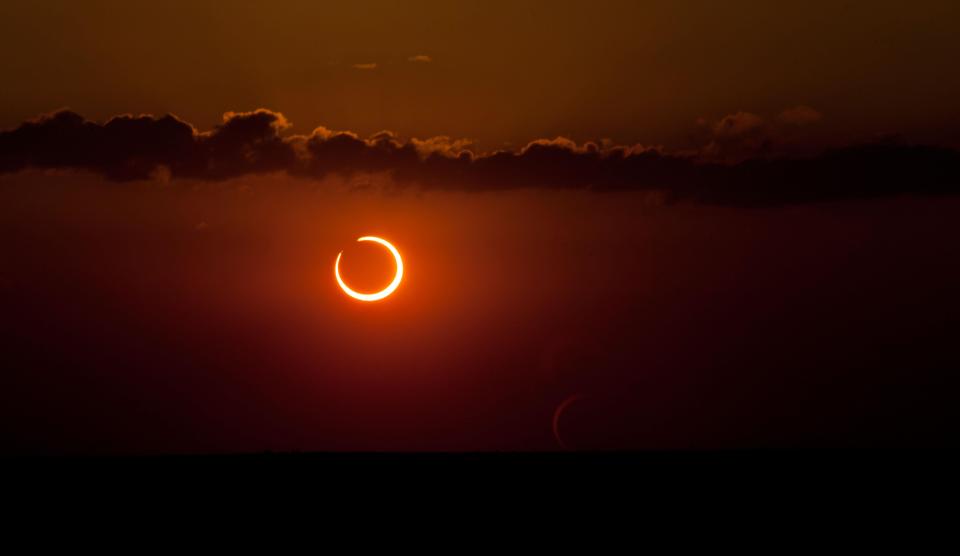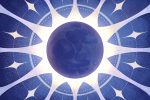With August 21, the day on which a much-anticipated solar eclipse will occur, quickly approaching, it’s time to take a closer look at what is being called the biggest astronomical event America has seen in years. This year, for the first time since February 1979, states in the U.S. will experience what is known as a total solar eclipse, or a “totality event.”
A full solar eclipse in America means lots of things. Hotel prices in towns directly along the path of the eclipse are skyrocketing, as are the price of plane tickets to those areas and, unsurprisingly, traffic is expected to be a hectic mess (even more so than usual, that is) in the cities where the celestial show will be at its best.
However, it also means it’s time to start loading up on knowledge and gear to make your encounter with the eclipse as stellar as possible. Below are some of the most important things to know before the day of the 2017 eclipse, as well as cool information on solar eclipses in general, including when and where the next ones will occur.
Viewing Safety
As always, safety comes first when viewing an eclipse. Before getting into the finer details of what causes an eclipse and where the path of totality (also known as a full solar eclipse) will fall, it’s important to know how to view the incredible event without literally burning out your eyes.
Yes, that’s right, without proper equipment to protect your eyes from harmful ultraviolet radiation given off by the massive star, the Sun can cause permanent damage to human eyes. Even with shaded sunglasses on, looking directly at the sun delivers around a thousand times more light than is deemed safe for human eyes. Even directly before and after the sun is completely obscured by the moon, watching the celestial event unfold without proper eye protection could leave permanent scars on your vision.
Because of this potential health risk, NASA has provided a list of reputable vendors who sell “eclipse viewers,” special glasses and filters designed to reduce our home star’s incredible, blinding light to a white disk in the dark sky.
However, if you are in the so-called “path of totality” where the Sun is completely obscured by the Moon for around two minutes during the event, NASA’s guide to eclipse safety states that “looking directly at the sun is unsafe except when during the brief total phase of the solar eclipse.” So, if you’re one of the lucky people who will be in the direct path of the eclipse as it travels across the middle of North America, there should be a period of roughly two minutes where it’s safe to look directly at the eclipse with your bare eyes.
What Is a Full Solar Eclipse?
A full solar eclipse occurs when the Moon passes directly between the Earth and the Sun. Because the Sun is roughly four hundred times the size of the Moon, but is four hundred times farther away from the Earth, nature has set up the perfect coincidence—when conditions are just right, the Moon passing between Earth and our star causes a full eclipse of the Sun’s radiant light. However, despite its name, a “full” solar eclipse never obscures the light of our brilliant star entirely; the corona, the Sun’s bright, glowing atmosphere, will still be visible, spreading like a crown around the outside of the Moon even during total solar eclipses.
The reason that full solar eclipses are so rare is that, most of the time, the Moon’s shadow is cast either above or below Earth. A perfect set of conditions must exist for the Moon to pass directly between the Earth and the Sun, making solar eclipses very uncommon and total solar eclipses rarer still.
There are many kinds of solar eclipses. Annular solar eclipses happen when the moon is at the far end of its oval-shaped elliptical orbit of the Earth, meaning that it appears smaller in the sky and doesn’t completely cover the Sun even when passing directly in front of it. Partial eclipses are when the moon passes in front of a portion of the Sun; this results in a percent of the Sun’s total light being temporarily blocked, unlike in the more stunning and unusual annular and total solar eclipses. The last kind is a total solar eclipse, which is what people in the path of totality in North America will witness this August.
When and Where to Watch
The eclipse will happen on August 21, 2017. It will last a little over two hours, during which time the Moon will fully transit across the face of the Sun. For people on America’s west coast, the eclipse will take place during the morning, while people in the southeastern U.S. will see the event unfold in the afternoon. In the middle of that two-hour period, the light of the Sun will be all but completely obscured, turning day to night for all standing in its path.
At least that’s what will happen in the “path of totality,” the swatch of land in North America where the Moon’s shadow will fall most directly. The direct course of the eclipse slashes across the United States, beginning in Oregon and ending in South Carolina. Some of the major cities located along the path of totality include: Salem, Oregon; Idaho Falls, Idaho; Casper, Wyoming; Carbondale, Illinois; Nashville, Tennessee and Columbia and Charleston in South Carolina. The place where the “greatest eclipse” will occur is in the lower southwestern corner of Kentucky.
If you want to find out how close you are going to be to the path of totality (or if you’re trying to decide where to go on a last-minute summer vacation) this video on YouTube does a great job of showing where the Moon’s shadow will fall most directly across North America on August 21.
What if I Miss It?
If you miss the 2017 full solar eclipse, the next one visible in the United States won’t be for another seven years. That’s right, the next full solar eclipse for Americans will come in 2024, when areas of the sky above Texas, Mexico, the Midwest and the northeastern U.S. will be darkened by the Moon’s creeping shadow.
However, if you’ve caught the eclipse-chasing bug and can’t wait that long, there are several other total solar eclipses to tide you over between now and then. On July 2, 2019, a full solar eclipse is scheduled to pass over the South Pacific, Chile and Argentina; these same countries, along with the South Atlantic, will experience another totality event less than a year later on December 14, 2020. On December 4, 2021, another total solar eclipse will occur, its path of falling across Antarctica, South Africa and the South Atlantic, although totality will only be visible from Antarctica.











